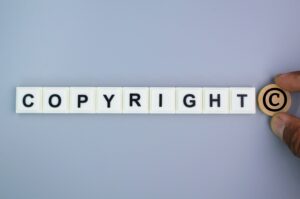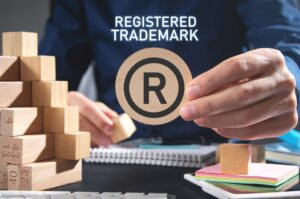Rising Challenges with False Infringement Complaints on Amazon
The prevalence of false and baseless Amazon infringement complaints is at an all-time high. Amazon frequently removes listings or suspends seller accounts without investigating the merits of infringement on Amazon complaints. Sellers enrolled in Brand Registry are unlikely to be impacted by false and baseless infringement complaints. Sellers, such as Third Party Sellers who resell other brands’ products cannot enroll in Brand Registry, and therefore face stiffer challenges with respect to appealing false infringement on Amazon complaints. Fortunately, Amazon Suspension Lawyer is well-equipped to assist those sellers not enrolled in Brand Registry with defeating false and baseless infringement complaints.
Understanding Trademark Infringement under U.S. Law
Trademark infringement is defined as “the unauthorized use of a trademark or service mark on or in connection with goods and/or services in a manner that is likely to cause confusion, deception, or mistake about the source of the goods and/or services.” Title 15 of the United States Code, section 1114 (otherwise known as the Lanham Act), prohibits “use in commerce any reproduction, counterfeit, copy, or colorable imitation of a registered mark in connection with the sale, offering for sale, distribution, or advertising of any goods or services on or in connection with which such use is likely to cause confusion, or to cause mistake, or to deceive.”
The Lanham Act’s Provisions on Trademark Protection
The Lanham Act also prohibits the reproduction, counterfeiting, copying or colorable imitation of a registered trademark infringement and application of the reproduction, counterfeit, copy, or colorable imitation to labels, signs, prints, packages, wrappers, receptacles or advertisements intended to be used in commerce upon or in connection with the sale, offering for sale, distribution, or advertising of goods or services on or in connection with which such use is likely to cause confusion, or to cause mistake, or to deceive.
Amazon Suspension Lawyer’s Approach to Evaluating Infringement Complaints
When suspended sellers reach out to Amazon Suspension Lawyer, we evaluate the merits of the trademark infringement complaint. We use our legal expertise to determine whether the alleged trademark infringement “is likely to cause confusion, deception or mistake about the source of the goods.” We apply 8 key factors identified by the United States Court of Appeals for the Ninth Circuit in AMF, Inc. v. Sleekcraft Boats, 599 F. 2d 341 (9th Cir. 1979):
-
Strength of the rights owner’s trademark;
-
Proximity of the goods;
-
Similarity of the trademarks;
-
Evidence of actual confusion;
-
Marketing channels used;
-
Type of goods and the degree of care likely to be exercised by the purchaser;
-
Infringing party’s intent in selecting the mark; and
-
Likelihood of expansion of the product lines.
Utilizing the First Sale Doctrine in Defense Against Infringement Claims
If Amazon Suspension Lawyer concludes there is no trademark infringement, then we rely on legal principles such as the First Sale Doctrine to defeat the trademark infringement claim. In NEC Electronics v. Cal Circuit Abco, 810 F. 2d 1506 (9th Cir. 1987), the Court of Appeals for the Ninth Circuit held that a third party seller cannot be liable for trademark infringement if the third party seller purchases genuine products from an authorized distributor for purposes of resale. The First Sale Doctrine only applies when the third party seller is the first purchaser of the product and the purchase is made from an authorized retailer, distributor, or manufacturer. In other words, the purchase must be made from someone who is part of the product’s verifiable supply chain.
Building a Strong Defense for Suspended Amazon Sellers
Amazon Suspension Lawyer works with sellers to assemble documents proving the allegedly infringing product is sourced from the product’s verifiable supply chain. Once these documents are assembled, Amazon Suspension Lawyer prepares a detailed appeal to defeat the baseless infringement on Amazon complaint.
Contact Us for Assistance with Infringement Claims
If you have been suspended for a false or baseless infringement on Amazon claim, or if you want more information about false and baseless infringement on Amazon claims, please contact us!
FAQ’s
What is Amazon Brand Registry and How Does it Help in Trademark Protection?
Amazon Brand Registry is a program designed to give brand owners more control over their products on Amazon. This program does not apply to third party sellers who resell other brands’ products. By registering a trademark with Amazon, brand owners gain exclusive rights to their listings, and Amazon provides additional tools to protect their intellectual property. This includes proactive measures to prevent trademark or patent claims violations and a more efficient process to report and remove listings that infringe on registered trademarks. Sellers enrolled in Amazon Brand Registry are less likely to face false trademark infringement complaints due to these enhanced protections.
How Can Sellers Defend Against False Trademark Infringement Claims on Amazon?
Third party sellers facing false trademark infringement claims on Amazon can defend themselves by demonstrating that their products do not infringe upon the intellectual property rights of the complainant. This involves providing evidence of the authenticity of the products, showing that the trademark is not being used in a misleading manner, and utilizing legal principles like the First Sale Doctrine. Having a license agreement with the trademark owner is also a defense to trademark infringement claims on Amazon. Engaging with a knowledgeable law firm like Amazon Suspension Lawyer can help in effectively navigating these complex situations.
What Constitutes a Trademark Infringement under U.S. Law?
Under the Lanham Act, trademark infringement occurs when there is an unauthorized use of a trademark or service mark in a manner likely to cause confusion, deception, or mistake about the source of the goods or services. This includes any reproduction, counterfeit, copy, or colorable imitation of a registered mark used in commerce in connection with the sale, distribution, or advertising of goods or services, which is likely to cause confusion or deceive consumers.
Does the First Sale Doctrine Apply to Copyright?
No, the First Sale Doctrine only applies to Trademark Infringement under the Lanham Act. The First Sale Doctrine has nothing to do with copyrights, the visual artists rights act, or any other copyright law.
What Steps Should I Take to Report Copyright Infringement on Amazon?
Copyright Infringement on Amazon is governed by the Digital Millennium Copyright Act (DMCA). The DMCA is a U.S. copyright law that provides a legal framework for addressing online copyright infringement. When a copyright owner believes their copyrighted material is being used without the copyright owner’s permission, the copyright owner can submit a DMCA takedown notice to the service provider (i.e., Amazon) hosting the content.
To report copyright infringement on Amazon, the copyright holder should use Amazon’s Report Infringement Tool or submit the infringement notice through Amazon Brand Registry. Copyright owners can report the copyright infringement themselves, or they can report copyright infringement through an agent (usually a lawyer). Reporting copyright infringement involves identifying the copyrighted material that has been infringed upon and giving detailed information about the copyright infringement. It is important to provide accurate and complete information to facilitate Amazon’s investigation into the reported copyright infringement.
How to Respond to Copyright Infringement on Amazon.
In response to a DMCA takedown, the alleged infringer (usually a third party seller) has the option to submit a counter-notice. This counter-notice typically includes:
-
Contact information: Name, address, phone number, and a physical or electronic signature of the third party seller.
-
Identification of the removed material: Clear identification of the material that was taken down, along with the location (URL) where it was hosted.
-
A statement under penalty of perjury: A statement asserting that the third party seller submitting the counter-notice has a good faith belief that the material was mistakenly taken down or misidentified, and that the third party seller consents to the jurisdiction of the federal court in the district in which the third party seller resides.
By submitting a DMCA counter-notice, the third party seller challenges the takedown, claiming that the material does not infringe on any copyrights or that the copyright holder made a mistake in the takedown notice. If the service provider (i.e., Amazon) receives a valid counter-notice, they must restore the removed material after a waiting period (10-14 days), unless the copyright holder takes legal action to prevent the restoration (i.e., files a copyright infringement lawsuit in the appropriate United States District Court AND provides Amazon with a copy of the lawsuit). This process provides a way for third party sellers to dispute meritless or erroneous takedown notices.
Amazon Seller Central has a templated form where a third party seller can quickly populate and submit a DMCA counter-notice. It is important to remember that a DMCA counter-notice is viable only if the third party seller has a genuine belief and legal basis that they are not infringing on the copyrighted material, or if the DMCA takedown is procedurally defective.
Submitting a DMCA counter-notice can result in legal action against the third party seller. Because of the potentially significant legal implications, third party sellers should consult with Amazon Suspension Lawyer before submitting a DMCA counter-notice.
What is a License Agreement?
A license agreement is a contract between two parties that outlines the terms and conditions under which one party (the licensor) grants the other party (the licensee) the right to use a specified asset. In the Amazon context, the third party seller is the licensor, and the copyright owner/copyright holder/trademark owner is the licensee. The asset is intellectual property, such as a trademark, copyright (image, poster, schematic, text, book, database, etc.), computer program, software, or patent.
License Agreements are common in various industries such as e-commerce where intellectual property such as trademarks, copyrights, and patents are critical. License Agreements are essential for protecting the interests of both parties and ensuring that the use of the licensed asset complies with legal and contractual obligations. It’s important for both parties to carefully review and understand the terms of the license agreement before entering into the contract.
Having a license agreement means that a third party seller can use copyrighted material with the copyright owner’s permission. Having a license agreement also means a seller can sell a branded/trademarked product without fear of being sued or reported for trademark infringement on Amazon. Having a license agreement also means a third party seller can quickly resolve any infringement concerns on Amazon.
If a third party seller enters into a License Agreement with a copyright owner or trademark owner, the third party seller should be immune from any infringement complaints related to the copyright or trademark. In the event the third party seller is reported for copyright infringement or trademark infringement, the third party seller can provide the license agreement to Amazon. Amazon should then remove the infringement complaint, and reinstate the third party seller’s Amazon seller account or suppressed listing.
How Does the First Sale Doctrine Protect Sellers Against Trademark Infringement Claims?
The First Sale Doctrine is a legal principle that protects third party sellers from trademark infringement claims when they sell genuine products purchased from an authorized distributor. It applies when the third party seller is the first purchaser of the product and the transaction is made from the product’s verifiable supply chain. This doctrine is crucial for third party sellers who resell branded products as it can be used to defend against false infringement claims.
What is the Role of Intellectual Property Rights Owners in Protecting their Trademarks on Amazon?
Intellectual property rights owners play a crucial role in protecting their trademarks on Amazon. They must proactively monitor the platform for potential infringements and report any violations they find. By registering their trademarks with Amazon Brand Registry, rights owners gain additional tools and support from Amazon in safeguarding their intellectual property. This proactive stance helps in maintaining the integrity of their brand and prevents unauthorized use of their trademarks. Intellectual property rights owners should also consider license agreements if they want to permit certain third party sellers to resell their products and/or use their copyrights, trademarks, or patents.
What Evidence is Needed to Challenge a False Infringement Complaint on Amazon?
To challenge a false infringement complaint on Amazon, third party sellers need to compile evidence showing that their product does not infringe upon any trademarks. This evidence might include documentation proving the authenticity of the product, a detailed comparison of the trademarks in question, and any relevant legal arguments (like the First Sale Doctrine). Additionally, demonstrating that the product was purchased from a legitimate source within the product’s supply chain is crucial. Having a license agreement with the copyright, trademark, or patent owner is also a defense.
What are the Implications of a Seller Account Suspension Due to Trademark Violations on Amazon?
A seller account suspension due to trademark violations on Amazon can have significant implications. It can lead to lost sales, suppression of listings, damage to the seller’s reputation, deactivation/termination of seller accounts, and potentially legal action if the infringement claims are substantiated. It is vital for sellers to respond promptly and effectively to suspension notices, usually by preparing a detailed appeal outlining their defense against the alleged violations. Sellers must be aware that Amazon, upon receipt of a trademark infringement report, can suppress a third party seller’s ability to sell or otherwise dispose of any inventory the third party seller maintains at FBA.
How Do I Report Intellectual Property Violations on Amazon?
To report infringement or a violation of intellectual property on Amazon, you can use the platform’s reporting system. This typically involves providing details about the infringement, including the ASIN or URL of the product listing, a description of the intellectual property rights being violated, and evidence supporting the claim. It’s important to provide accurate and detailed information to enable Amazon to take appropriate action.
What Are the Risks of Image Restrictions and Possible Infringement on Amazon?
Image restrictions on Amazon are in place to protect the intellectual property rights of copyright owners. Using images that you do not have the rights to or that infringe upon someone else’s copyright can lead to possible infringement claims. Such violations can result in the removal of listings, account suspensions, and potential legal consequences. Sellers must ensure that they have the appropriate rights to all images they use in their listings to avoid these risks.





